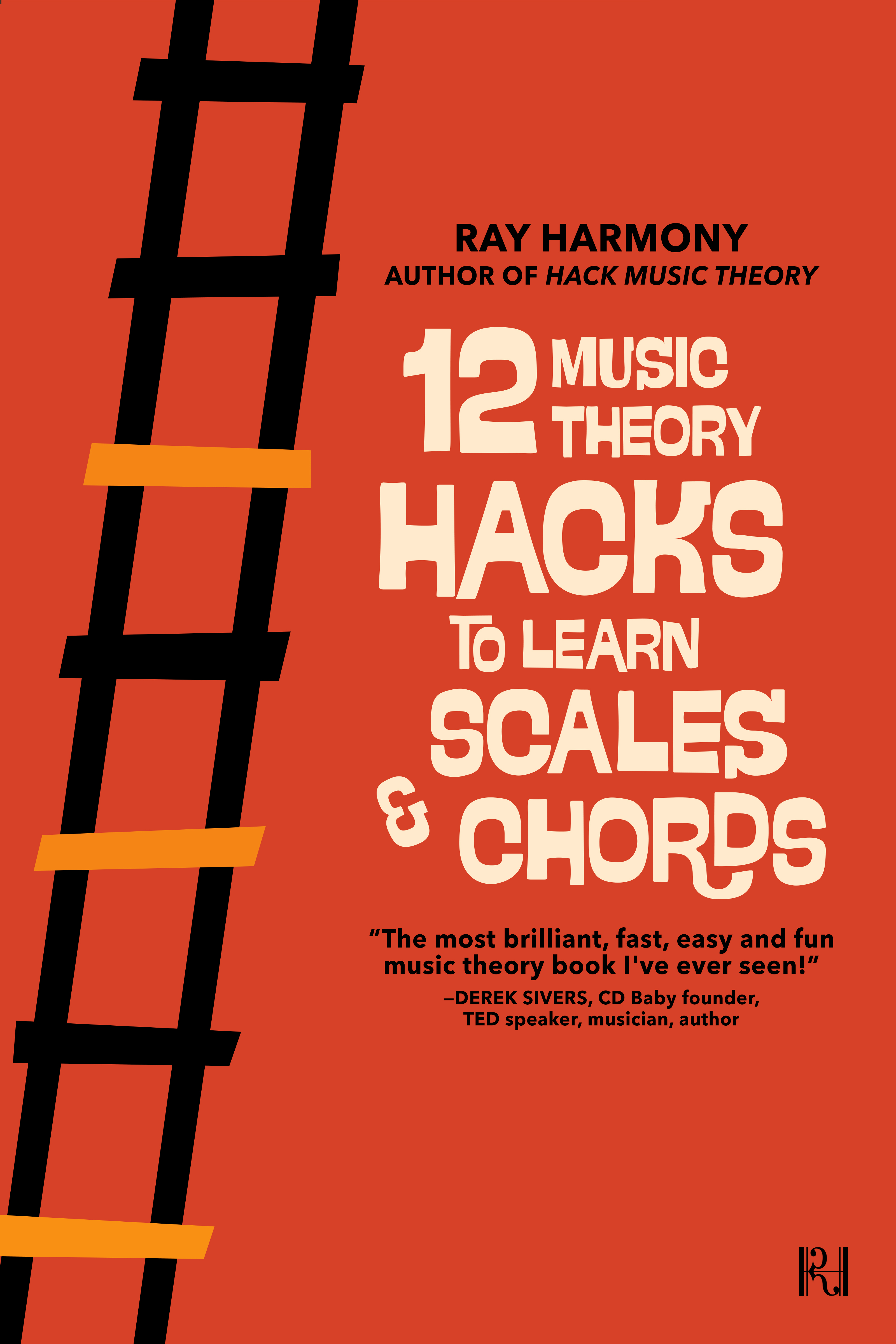As with most things in life, writing a great vocal melody is all about balance: Balancing harmonic and non-harmonic notes, balancing small and large melodic intervals, balancing short and long note values, and so on. It’s also about great motifs (i.e. short musical ideas); allowing them to “randomly” happen (often by fixing perfect 4ths & 5ths), and then recognising them when they do appear, so you can use them again. A great motif will make your melody memorable, but only if you don’t overuse it. This is my rule of “too much chocolate!” (AKA too much of a good thing). Even if you have the most delicious and expensive organic vegan chocolate, if you have too much, you’re gonna get sick of it. Just enough chocolate in your melodies will keep your listeners coming back for more! Please check out the Hack Music Theory for Songwriting & Producing PDF for my full Melody Checklist, which also gives you the “why” and “how” for each element of writing a great melody.
Below is the exact chord progression (including inversions and sus chords) that we’re writing a vocal melody over. It’s in the key of E Dorian:

| Spelling | Chords |
| I | Em |
| V | Bm/D |
| ♭III | Gmaj/D |
| IV | Asus2/E → Amaj/E → Amaj |
| ♭VII | Dsus2/A → Dmaj/A →Dmaj/F♯ → Dsus2/E |
And here is our vocal melody:
| Chord progression (root note of each chord is muted and dark in MIDI above) | Vocal melody (first half), with spelling (spelling is heard and written in relation to each chord's root note) |
| Em | F♯ (2) → G (♭3) → F♯ (2) → D (♭7) holds over to next chord... |
| Bm | …becoming a D (♭3) → C♯ (2) → D (♭3) → F♯ (5) |
| Gmaj | A (2) |
| Amaj | C♯ (3) → D (4) → C♯ (3) → A (1) → F♯ (6) → G (♭7) briefly holds over to next chord... |
| Dmaj | …becoming a G (4) → F♯ (3) |
| Chord Progression loops... | Vocal melody (second half, i.e. the variation) |
| Em | F♯ (2) → G (♭3) → F♯ (2) → F♯ (2) holds over to next chord... |
| Bm | …becoming a F♯ (5) → D (♭3) → C♯ (2) → A (♭7) |
| Gmaj | A (2) |
| Amaj | C♯ (3) → D (4) → B (2) → A (1) → F♯ (6) → G (♭7) briefly holds over to next chord... |
| Dmaj | …becoming a G (4) → A (5) |
Lastly, always keep my Melody Checklist on hand when writing melodies, as you literally can’t go wrong with that next to you. My Melody Checklist is in the Hack Music Theory for Songwriting & Producing PDF. Until next time, thanks for reading and happy songwriting!
Ray Harmony
Music Teacher
Victoria BC, Canada
 | |
Wooohooo!!! You're a mere 30 minutes away from being even smarter than you already are. Just head over to your inbox now for your free download.
